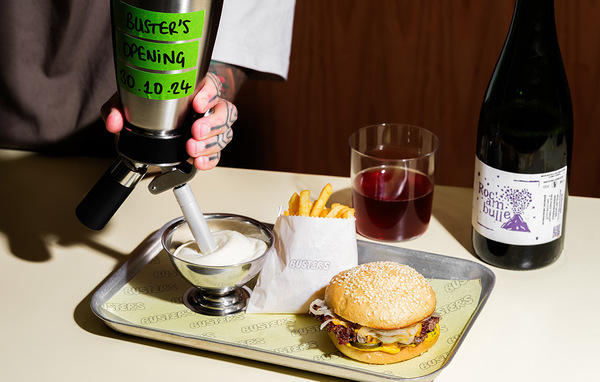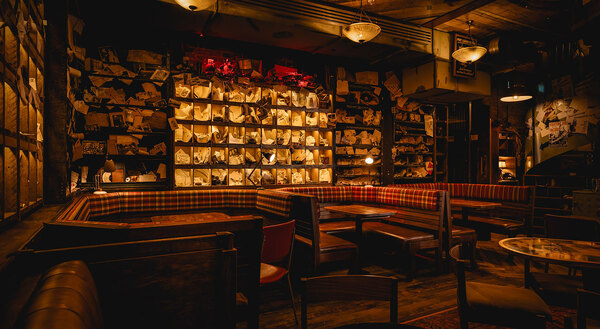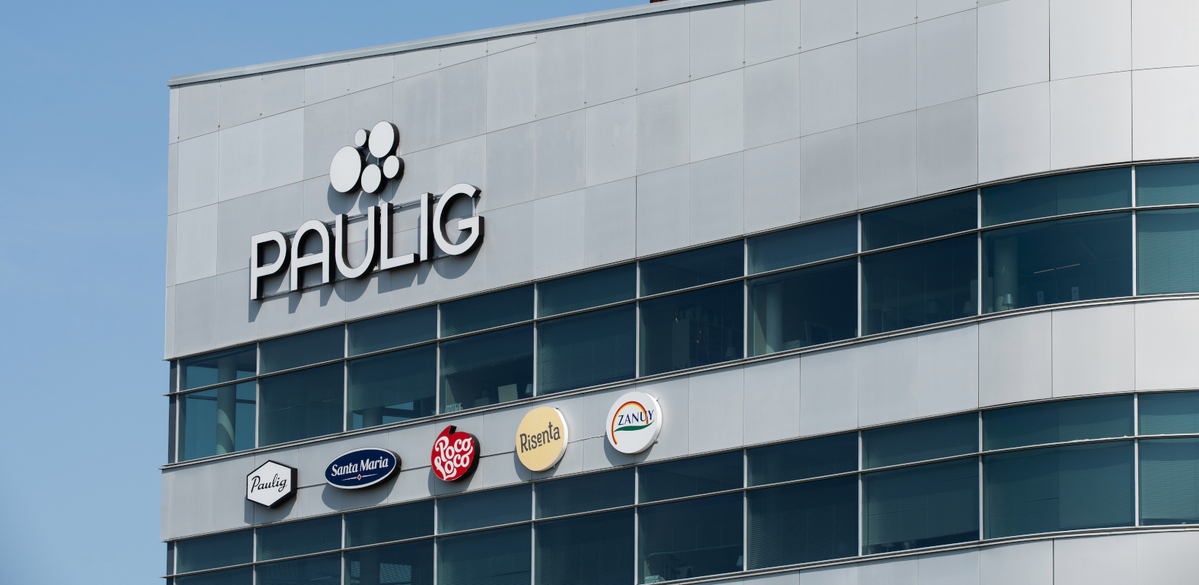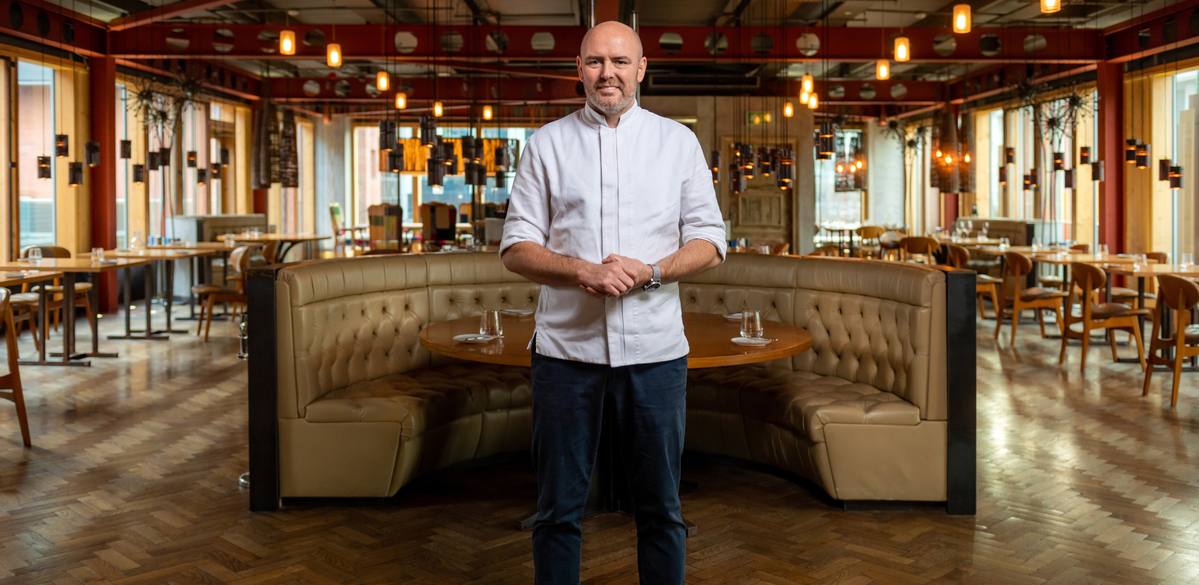Marco Pierre White's top 10 dishes
Caterer. Michael Raffael reports
Marco Pierre White's 10 favourite recipes are larger than life. They have a mythical quality. Perhaps it's because they shone out when he was at his most impressionable, a precocious young talent building a massive reputation for himself at Harvey's in the late 1980s. They represented the peaks of French haute cuisine at a time when he had never crossed the Channel to France. (He has still never eaten in a Michelin-starred restaurant there.) The standards they set were the benchmark against which he measured himself.
Soupe aux truffes elysee, Paul Bocuse
"What a concept: to turn a soup into a pie!" Paul Bocuse's truffle and foie gras consommé topped with a puff pastry dome was served to President Valéry Giscard d'Estaing on 25 February 1975 at a banquet where Bocuse was decorated with the Légion d'Honneur for his services to French gastronomy.
Presented in an individual onion soup bowl, each portion contains 50g of fresh black Périgueux truffle and 20g of foie gras. "It's almost," describes White, "like eating a soft-boiled egg. When you smash the crust you get the truffle hit. I like the grandness. You are having the soup, but all those around you are sharing it."
Loup de mer en croute, sauce choron, Paul Bocuse
"You can't reinvent the wheel," insists White, "but you can refine." Baking meat in pastry goes back to the Middle Ages. Baking fish in it was a Fernand Point favourite. Baking Mediterranean bass stuffed with a lobster mousse in a feuilletage marked with fish scales is a Bocuse refinement. Its effect depends on the skill with which the chefs de rang at his restaurant in Collonges-au-Mont-d'Or, present, carve and serve it. According to White, their professionalism enhances the experience: "I want to see waiters working, not just plate carriers."
Poularde de bresse en vessie, Fernand Point
Fernand Point, at La Pyramide, Vienne, was the creative force behind several of White's favourite recipes. According to White, "What Point did was genius: putting a chicken in a pig's bladder with truffles under the skin and port, Madeira, Armagnac and truffle juice." The bladder poached in water insulated its contents but stretched and swelled up like a balloon so that it was taken to the customer's table looking like a football, where it was punctured and the chicken carved. Setting aside the dramatic aspect of the dish, using a bladder is exactly the same principle as modern sous-vide cookery: the flavours are retained and amalgamated during cooking.
Canard a la presse, Tour d'Argent
On the Left Bank of the Seine, overlooking Notre Dame, is Paris's grandest restaurant, La Tour d'Argent. It's no longer cutting-edge, but it has one unique dish. For more than a century it has been making and numbering its most celebrated speciality "canard à la presse". In 1891 the Prince of Wales, later to become King Edward VII, ate number 381. Today, the number has passed well beyond the million mark.
A lightly roasted Challans duck, it's served with a sauce that's thickened with the blood and juices from its crushed carcass.
"It's representative," White says, "of a generation. The show is in the room. The duck has to be killed within 24 hours or you don't get the result."
Gratin de queues d'ecrevisses, Fernand Point
Fernand Point's crayfish gratin didn't have an easy birth. Point believed that the saucier was like a soloist in an orchestra, and he refused to put the dish, which relied on a blend of crayfish velouté (sauce nantua) and hollandaise, on his carte until he'd worked at it for several years. White singles out the generosity behind the dish: "To do it properly, you can't skimp. You can't just put five or six little crayfish in the sauce. You have to put a dozen."
The Aga Khan, one of Point's favourite customers, would agree. He would eat up to eight portions at a sitting.
Escalope de saumon a l'oseille, Jean and Pierre Troisgros
Early in the 1980s, the Troisgros brothers' recipe for salmon with sorrel was probably the most imitated of nouvelle cuisine dishes. "It was the first time," White recalls, "that I'd ever seen fish cooked in a non-stick pan without oil or butter." It wasn't the only unique feature. The seared wild salmon (farmed was just taking over) wasn't quite cooked through, so it stayed moist in the middle.
The Troisgros restaurant is at Roanne, a small town in the Loire region. The recipe is an adaptation of a local speciality, alose à l'oseille, that combines fresh water shad caught in the river with a sorrel sauce.
Pigeonneau en croute de sel, Roger Verge
Roger Vergé took the glamour of the Côte d'Azur, mixed it with the colour and perfumes of Provençe and packaged it as haute cuisine at Le Moulin de Mougins near Cannes. Baking a boned and stuffed Bresse squab pigeon in a sea salt crust provided his jet-setters with the thrills and theatre they were expecting.
The salt crust didn't make the pigeon taste salty, but it insulated it, keeping in the moisture, while also adding an iodine tang to the meat. The salt-crust method works as well with fish and, surprisingly, with joints of beef. "It's not," White insists, "just a gimmick."
Pied de cochon aux morilles, Charles Barrier
Boning and stuffing a pig's trotter, as in zampone, is originally an Italian concept. It's French chefs like Charles Barrier who introduced it to restaurant menus and turned it into a classic, by stuffing it with morels and sweetbreads. In England, Pierre Koffmann at La Tante Claire borrowed the idea and, at Harvey's, White took it a stage further.
"Fernand Point said that perfection is a lot of little things done well," says White. "If you are going to do a classic like that, the boning, soaking, braising, filling and cooking all have to be perfect." In his seminal cookery book White Heat, he described this as his favourite dish: "If it were a painting it would hang in the Tate."
Gateau marjolaine, FranCois Bise
"Gâteau", with its modern Black Forest connotations, undersells what is a special dessert. It's made in a large brick shape for easy slicing. Thin sheets of ground hazelnut and chocolate sponge - there's no flour in the basic mixture - sandwich layers of chocolate ganache, buttercream and praline.
"It was a signature of François Bise [L'Auberge du Père Bise, on Lake Annecy]," White says, "but it was created in Point's kitchens." Introduced at a time when plate service was taking over from sweet trolleys, it was an archetypal "nouvelle" dessert: easy to portion and serve, stunning to look at, great to eat.
Croustade aux pommes, Pierre Koffmann
When first he tried Koffmann's apple tart, White, aged 22, was already an accomplished chef, not easily impressed. But it blew him away. Pierre Koffmann, in his prime at La Tante Claire, would make six individual portions every night. He stretched his own strudel paste by hand - nobody else was allowed to attempt it - pulling it out on a floured tablecloth till it was transparent like bubblegum. He lined pommes Anna rings with tissue squares of the paste, covered them with apple slices and built a strudel pyramid on top that he sprayed with a clarified butter and sugar solution. Freshly baked, the croustade looked like glass.
"It was without a doubt," White says, "one of the greatest puddings I've ever eaten."
Jeff Galvin on cooking Marco's top 10
Jeff Galvin talks about the experience of reâ'creating these culinary legends. "Chris, myself, Allan Pickett and Siân Rees [the bistrot's head chef] took on the task of preparing the dishes jointly. We were all fairly familiar with the dishes - we'd done them before at difference places - but Chris was the one that really had the inspiration for it (showing his age and his experience)!
"Trying to hunt down a pig's bladder for the poularde de Bresse en vessie wasn't easy. I don't think many places in London do that, perhaps Le Gavroche. In fact, Chris was saying that in the old days, if the pig's bladder was too small, you would have to pump the bladder up with a bicycle pump, tie it up and hang it from the ceiling to make it big enough to use.
"It's effectively the same method as cooking sous-vide. The chicken came out beautifully steamed, and we've since put it on the lunchtime menu at the bistrot. One customer who eats here regularly was thrilled to see it on the menu. He said he hadn't eaten the dish in 20 years.
"That's the great thing about our customers: they aren't put off by dishes like this, where the chicken is served en vessie at the table. They aren't put off, just intrigued. We put the salmon dish on the menu, too, and what was great about this was that Chris had a plate from Troisgros on which the salmon would have been served. He was given it as a memento from a stage he did there some 10 years ago [Chris would often do stages while on his summer holidays in France].
"The experience has been particularly fascinating for me. I wasn't that familiar with the history of the dishes or the chefs, and I've enjoyed reading up about them. It's been a very interesting exercise."



















